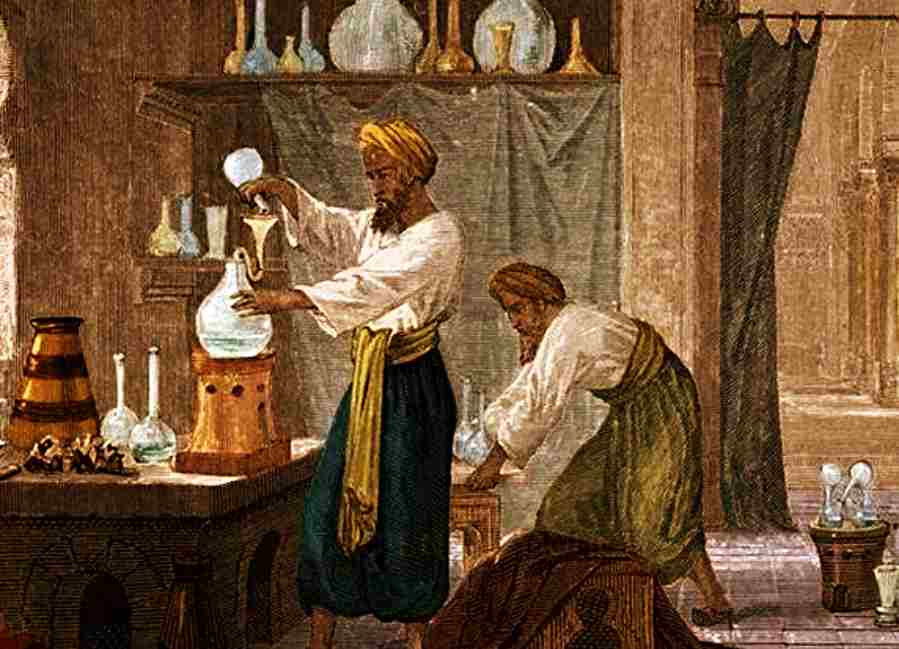Sun 11 February 2024:
In Arabic, due to the use of the definite article “al” before words, the term “chemistry” was expressed as “al-kimiya,” where “al” serves as the definite article. Westerners later adopted the term “alchemy” by dropping the final “-ya” sound, pronouncing it as “al-kimi” or in the form known in the West as alchemy.

Muslims would remain influential in this science until the 17th century.
During the 200-year Golden Age of Muslim chemistry, three chemists, in particular, stand out: Jabir ibn Hayyan, born in 722 in Iran and died in 815; Muhammad ibn Zakariya al-Razi, born in 865 and died in 925, a Persian scholar; and Al-Kindi, born in 801 in Iraq and died in 873.

However, there is a prevailing uncertainty about when people, regardless of whether they were Muslims or not, began using these tools in the field of chemistry.
The beginning of working with laboratory tools in the field of chemistry dates back to the 7th century, which is the first century of Islam.
Unfortunately, none of these tools have survived to the present day. However, Arabic manuscripts related to chemistry and alchemy that have reached us do contain some illustrations of these instruments, albeit in limited quantities.
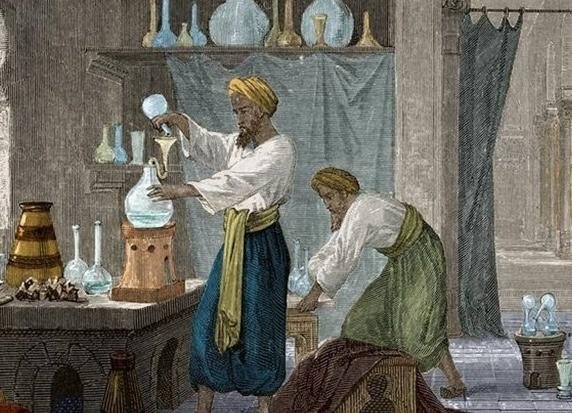
Ez-Zehravi, the method of obtaining rose water is known by many, he says.
A large lead container, made impermeable on the bottom and walls, is placed in a spacious area. This container is equipped with a durable lid. The necessary number of spouted funnels, as required by the design, is then hollowed out with 50, 100, or 200 holes. Subsequently, a copper boiler in the form of a bath is obtained. To prevent damage to the rose water, the smoke exiting the furnace is directed upwards. Afterward, water is directed into the container located on the furnace.
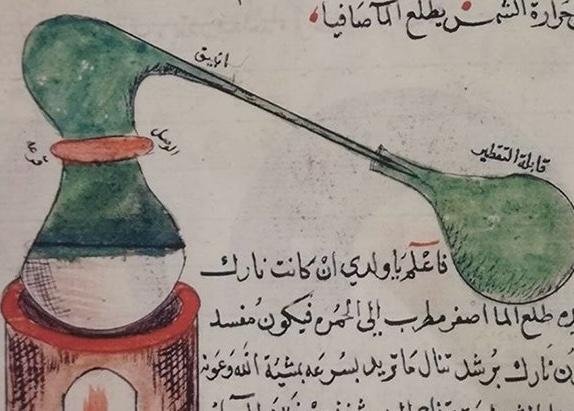
El-Mizze apparatus consisted of multiple layers separated by the space between horned funnels arranged outwardly in a vectorial manner. These horned funnels were filled with the leaves to be distilled, and they were suspended in the rising smoke through a permeable chimney located in the center of an ash pit established at the bottom. Distillation vessels connected to the horned funnels through “helmet” and “beak” for the distilled essence were fixed to the outer wall of the apparatus and covered with a lid. The distilled essence of the leaves was collected in distillation vessels located on the outside.
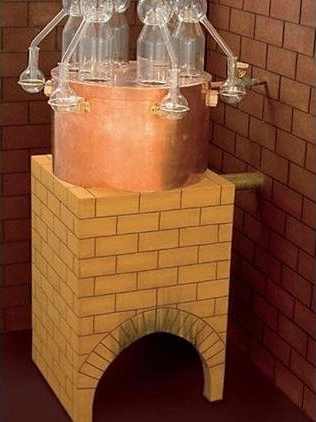
In the books “Kitab el-Esrar” and “Sırr el-Esrar” that he wrote, Abu Bakr al-Razi, a scholar from the 9th century, described an advanced alembic. According to his description, the apparatus worked as follows:
“The spouted funnel with a beak and the distillation vessel are suitable for the distillation of liquids. The key to this lies in the spouted funnel having a large and thick rim without splashing on the ground, and the rim should be free of any bubbles. The spouted funnel must be placed perfectly upright.
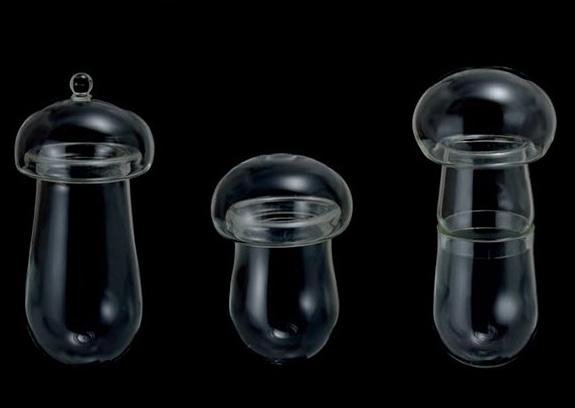
The pot in which the spouted funnel is positioned should have a pot-like form, and it should be filled with water up to the highest level of the substance inside the spouted funnel. Additionally, there should be a large pot on the stove with boiling water, so that if the water in the pot diminishes, it can be refilled. Avoid the contact of cold water with the spouted funnel, and secure the spouted funnel in a way that it won’t move and its base won’t touch the bottom of the pot, or else it will break.”
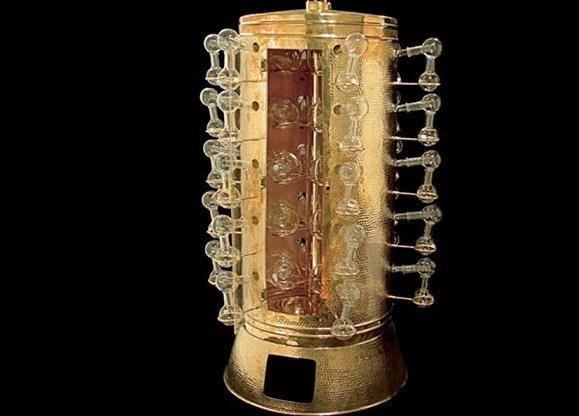
A copper alembic with origins dating back to the 12th and 13th centuries is of Anatolian origin and comes from the collection of the pharmacologist Turhan Baytop.
In this type, the condenser is located directly above the pot that is heated. Baytop believes that this type of alembic was widespread among Central Asian and Anatolian Turks.
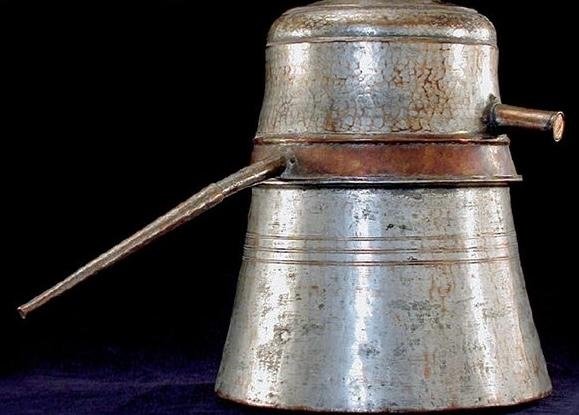
The tool referred to as “usal,” described by the 9th-century scholar Abu Bakr al-Razi in his book “Kitab el-Esrar ve Sırr el-Esrar,” facilitated the sublimation of dry substances. This tool was described by Al-Harizmi in the second half of the 10th century as a device made either of glass or clay.
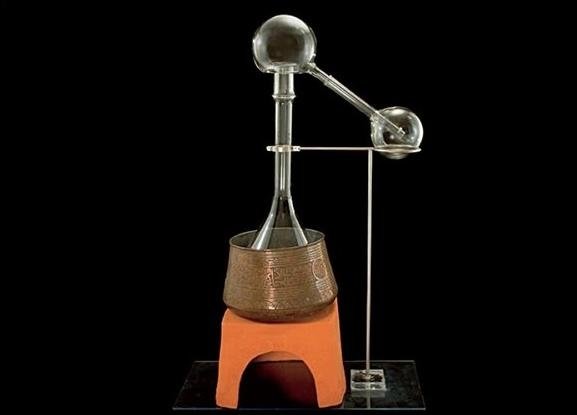
In the Latin version of the book by the 9th-century scholar Abu Bakr al-Razi, a funnel without a beak is depicted.
This alembic is known by the name “Alembic Cöcum,” derived from Arabic. It exhibits specific differences from the tools in the sublimation series. This tool is called “karʿa” and “enbîk” (inbîk) in Arabic. The product is collected in the channel of the “blind” helmet.

-A News
______________________________________________________________
FOLLOW INDEPENDENT PRESS:
WhatsApp CHANNEL
https://whatsapp.com/channel/0029VaAtNxX8fewmiFmN7N22
![]()
TWITTER (CLICK HERE)
https://twitter.com/IpIndependent
FACEBOOK (CLICK HERE)
https://web.facebook.com/ipindependent
Think your friends would be interested? Share this story!


